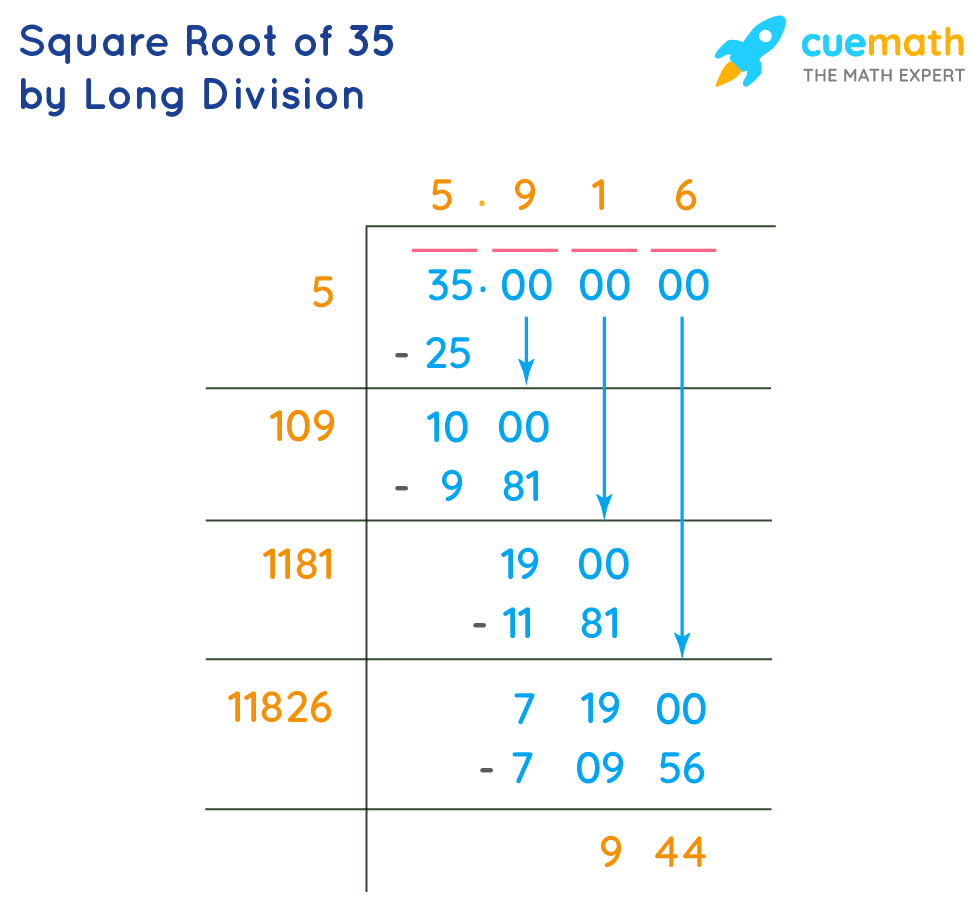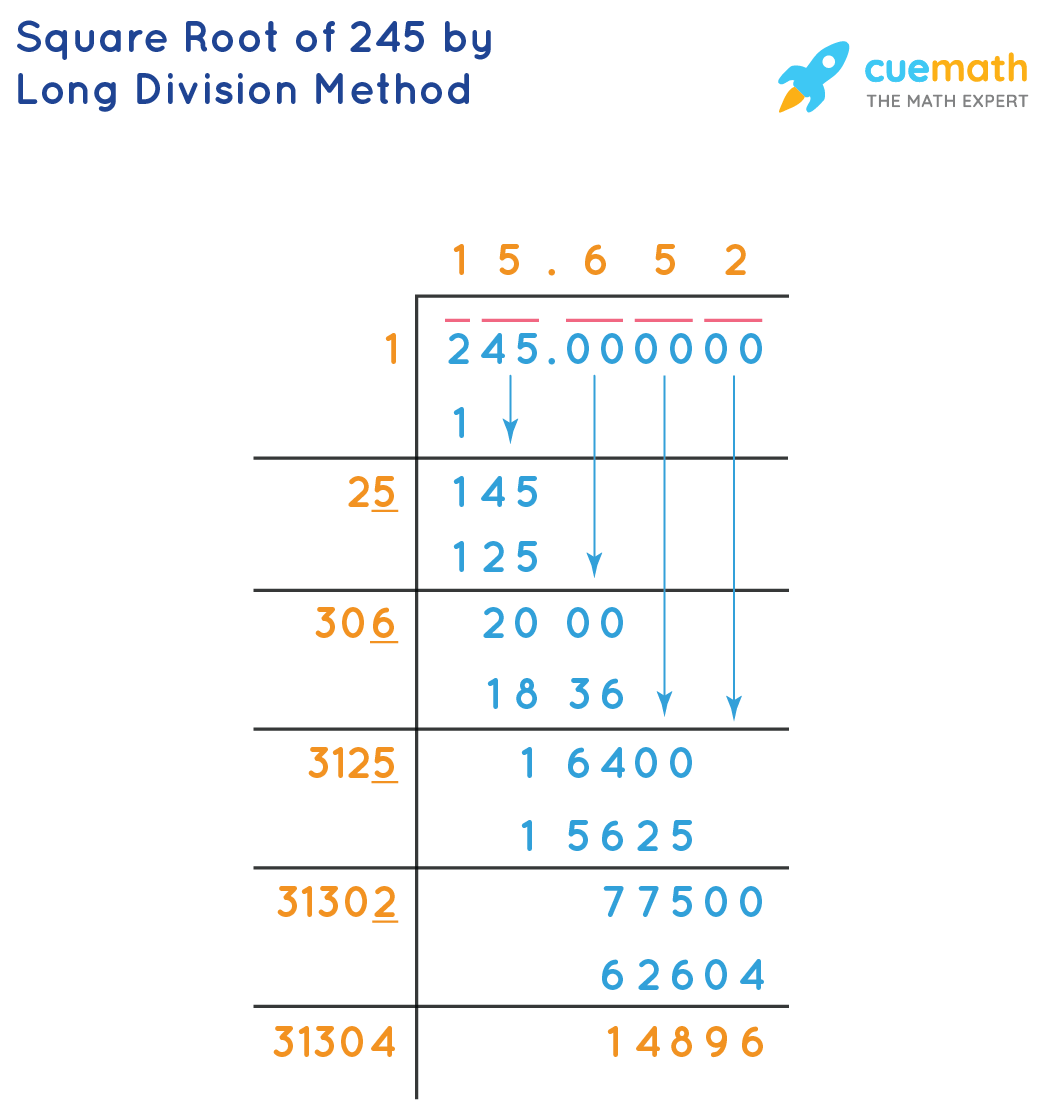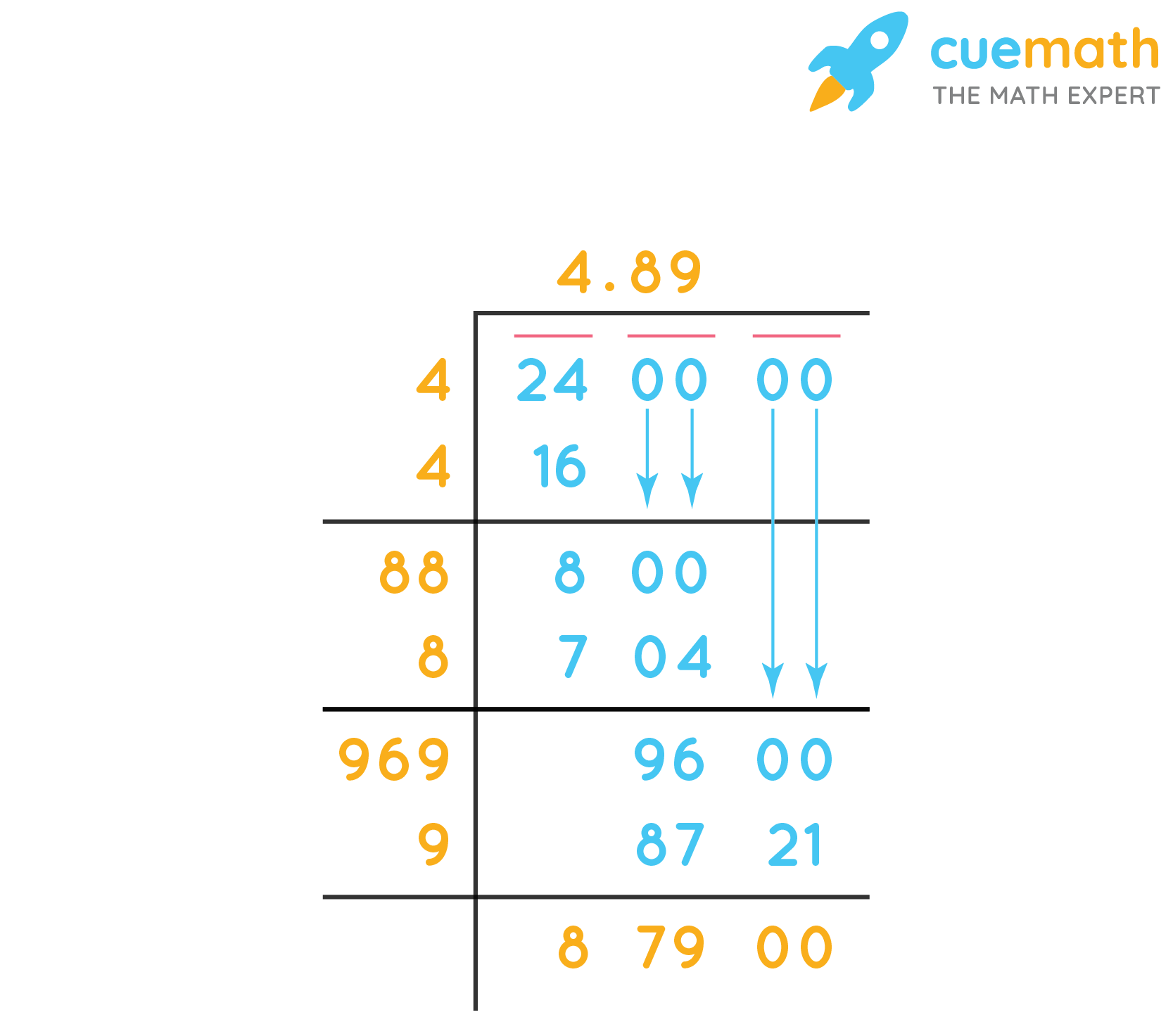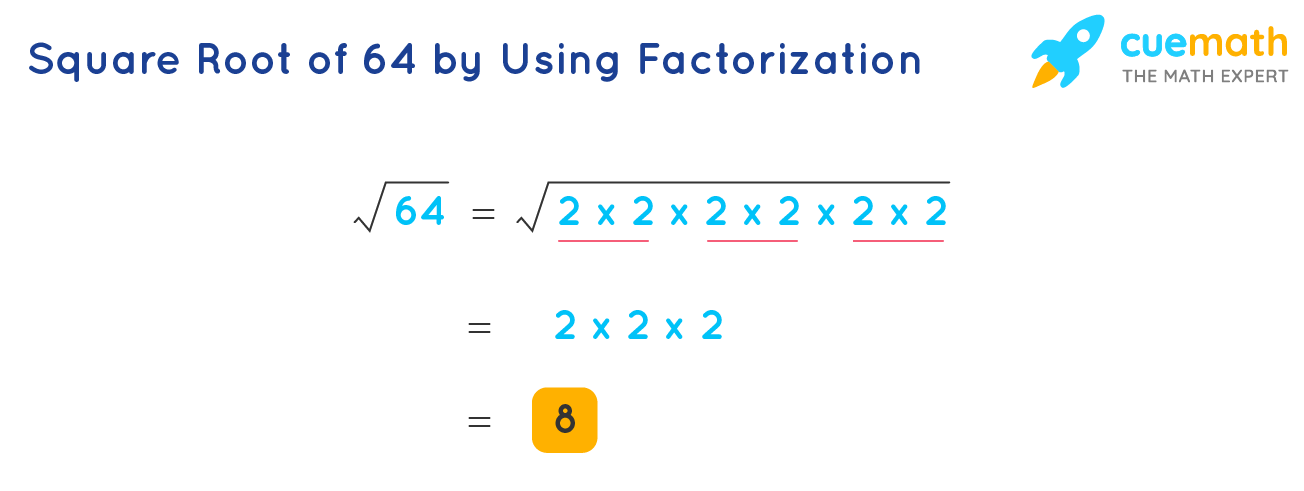Topic simplify square root problems: Discover effective methods to simplify square root problems with our comprehensive guide. Learn step-by-step techniques, practical examples, and advanced tips to master the art of simplifying square roots. Whether you're a student or a math enthusiast, this article will help you enhance your problem-solving skills and build a strong foundation in algebra.
Table of Content
- How to Simplify Square Roots
- Introduction to Simplifying Square Roots
- Basic Concepts of Square Roots
- Prime Factorization Method
- Using the Product Property
- Examples of Simplifying Square Roots
- Handling Fractions in Square Roots
- Simplifying Square Roots of Large Numbers
- Common Mistakes to Avoid
- Advanced Techniques in Simplifying Square Roots
- Simplifying Square Roots with Variables
- Practice Problems
- Solutions to Practice Problems
- Additional Resources and Tools
- Conclusion
- YOUTUBE: Hướng dẫn chi tiết về cách đơn giản hóa căn bậc hai, giúp bạn nắm vững kỹ năng quan trọng này trong toán học.
How to Simplify Square Roots
Simplifying square roots involves expressing the square root in its simplest form. Here are the steps and examples to help you understand this process:
Steps to Simplify Square Roots
- Factor the number: Break down the number inside the square root into its prime factors.
- Group the factors: Pair the prime factors, as each pair can be taken out of the square root.
- Simplify: Multiply the numbers outside the square root and leave the remaining factors inside.
Examples
Here are some examples to illustrate the process:
Example 1: √12
12 can be factored into 4 and 3. Since 4 is a perfect square, we can simplify:
\(\sqrt{12} = \sqrt{4 \times 3} = \sqrt{4} \times \sqrt{3} = 2\sqrt{3}\)
Example 2: √45
45 can be factored into 9 and 5. Since 9 is a perfect square, we can simplify:
\(\sqrt{45} = \sqrt{9 \times 5} = \sqrt{9} \times \sqrt{5} = 3\sqrt{5}\)
Example 3: √72
72 can be factored into 36 and 2. Since 36 is a perfect square, we can simplify:
\(\sqrt{72} = \sqrt{36 \times 2} = \sqrt{36} \times \sqrt{2} = 6\sqrt{2}\)
Handling Fractions
You can also simplify square roots in fractions by using a similar approach:
Example: \(\sqrt{\frac{7}{3}}\)
Combine the square roots and simplify:
\(\sqrt{\frac{7}{3}} = \sqrt{7} / \sqrt{3}\)
Additional Examples
To further practice, try simplifying the following square roots:
- \(\sqrt{18}\)
- \(\sqrt{50}\)
- \(\sqrt{98}\)
By practicing these steps, you will get better at recognizing patterns and simplifying square roots efficiently.
Surds
A surd is a square root that cannot be simplified further, like \(\sqrt{3}\). It's important to identify and leave such roots in their simplest form.

READ MORE:
Introduction to Simplifying Square Roots
Simplifying square roots involves reducing the expression under the square root sign to its simplest form. This process often includes factoring the number into its prime factors and pairing identical factors to move them outside the square root. By doing so, the square root becomes more manageable and easier to work with in mathematical problems.
- Identify and factor perfect squares from the number inside the square root.
- Use the product rule for square roots: \( \sqrt{ab} = \sqrt{a} \cdot \sqrt{b} \).
- Simplify the square roots of perfect squares.
For example, to simplify \( \sqrt{72} \):
- Factor 72 into prime factors: \( 72 = 2^3 \cdot 3^2 \).
- Pair the factors: \( 2 \cdot 2 = 4 \) and \( 3 \cdot 3 = 9 \).
- Write the square root as the product of the square roots of the factors: \( \sqrt{72} = \sqrt{2^3 \cdot 3^2} = \sqrt{4 \cdot 18} \).
- Simplify further: \( \sqrt{4} \cdot \sqrt{18} = 2 \cdot \sqrt{18} \).
- Continue simplifying: \( 18 = 9 \cdot 2 \), so \( \sqrt{18} = 3\sqrt{2} \).
- Combine the results: \( 2 \cdot 3\sqrt{2} = 6\sqrt{2} \).
Thus, \( \sqrt{72} \) simplifies to \( 6\sqrt{2} \).
Another example, to simplify \( \sqrt{45} \):
- Factor 45 into prime factors: \( 45 = 3^2 \cdot 5 \).
- Pair the factors: \( 3 \cdot 3 = 9 \).
- Write the square root as the product of the square roots of the factors: \( \sqrt{45} = \sqrt{3^2 \cdot 5} = \sqrt{9 \cdot 5} \).
- Simplify further: \( \sqrt{9} \cdot \sqrt{5} = 3 \cdot \sqrt{5} \).
Thus, \( \sqrt{45} \) simplifies to \( 3\sqrt{5} \).
Simplifying square roots is a fundamental skill in algebra that makes complex calculations easier and helps in understanding the properties of numbers.
Basic Concepts of Square Roots
Square roots are mathematical operations that determine what number, when multiplied by itself, gives the original number. They are denoted by the radical symbol, √. Understanding the basic concepts of square roots is crucial for simplifying them effectively.
Here are some fundamental steps to grasp the concept of square roots:
- Identify Perfect Squares: Numbers like 1, 4, 9, 16, and 25 are perfect squares because they are squares of integers (1², 2², 3², 4², 5², etc.).
- Prime Factorization: Breaking down a number into its prime factors helps in simplifying the square root. For example, the prime factors of 12 are 2 × 2 × 3.
- Using the Product Rule: The product rule states that the square root of a product is the product of the square roots of each factor. Mathematically, this is expressed as
√(a * b) = √a * √b.
Let's look at a detailed example to illustrate these concepts:
| Example | Simplification Steps |
| √72 |
|
Another important concept is dealing with fractions under the square root. The quotient rule states that the square root of a fraction is the quotient of the square roots of the numerator and the denominator: √(a/b) = √a / √b.
| Example | Simplification Steps |
| √(50/2) |
|
Mastering these basic concepts of square roots lays the groundwork for simplifying more complex expressions efficiently.
Prime Factorization Method
Prime factorization is a method used to simplify square roots by breaking down the number into its prime factors and then pairing identical factors to simplify. This method is particularly useful for numbers that are not perfect squares.
- Break down the number: Start by finding the prime factors of the number under the square root.
- Pair the prime factors: Group identical prime factors into pairs.
- Move pairs outside the root: For each pair of identical factors, take one factor outside the square root.
- Multiply the factors outside the root: Multiply all the factors that have been moved outside the root to get the simplified form.
Here are a few examples to illustrate the process:
- Example 1: Simplify
- Prime factors of 72: \(2 \times 2 \times 2 \times 3 \times 3\)
- Group identical factors: \((2^2) \times (3^2) \times 2\)
- Take out one factor from each pair: \(2 \times 3 = 6\)
- Final simplified form: \(6\sqrt{2}\)
- Example 2: Simplify
- Prime factors of 144: \(2 \times 2 \times 2 \times 2 \times 3 \times 3\)
- Group identical factors: \((2^2) \times (2^2) \times (3^2)\)
- Take out one factor from each pair: \(2 \times 2 \times 3 = 12\)
- Final simplified form: \(12\)
The prime factorization method is systematic and works well for both small and large numbers. It helps in breaking down the problem into manageable steps, making the simplification process straightforward.
Using the Product Property
The product property of square roots states that the square root of a product is equal to the product of the square roots of each factor. This property can be expressed mathematically as:
\[ \sqrt{ab} = \sqrt{a} \cdot \sqrt{b} \]
where \(a\) and \(b\) are nonnegative real numbers. Using this property, we can simplify complex square root expressions by breaking them down into simpler parts.
Here are the steps to simplify square roots using the product property:
Identify any perfect square factors in the radicand (the number under the square root).
Rewrite the radicand as a product of perfect squares and other factors.
Separate the square root of the product into the product of square roots.
Simplify the square roots of the perfect square factors.
Let's look at some examples to illustrate this method:
Example 1: Simplify \( \sqrt{72} \)
- Factor 72 into \( 36 \times 2 \) (where 36 is a perfect square).
- Rewrite as \( \sqrt{36 \times 2} \).
- Separate into \( \sqrt{36} \cdot \sqrt{2} \).
- Simplify to get \( 6\sqrt{2} \).
Example 2: Simplify \( \sqrt{50x^2y^3z} \)
- Factor \( 50x^2y^3z \) into \( 25 \times 2 \times x^2 \times y^2 \times y \times z \).
- Rewrite as \( \sqrt{25 \times 2 \times x^2 \times y^2 \times y \times z} \).
- Separate into \( \sqrt{25} \cdot \sqrt{2} \cdot \sqrt{x^2} \cdot \sqrt{y^2} \cdot \sqrt{y} \cdot \sqrt{z} \).
- Simplify to get \( 5 \cdot \sqrt{2} \cdot x \cdot y \cdot \sqrt{y} \cdot \sqrt{z} \), which simplifies further to \( 5xy\sqrt{2yz} \).
Using the product property makes it easier to simplify square roots by focusing on perfect square factors and breaking down complex expressions into manageable parts.

Examples of Simplifying Square Roots
Simplifying square roots involves breaking down the radicand into its prime factors and then simplifying by removing pairs of identical factors. Here are detailed examples to guide you through the process:
- Example 1: Simplify √50
- Factor 50 into its prime factors: 50 = 2 × 5 × 5
- Group the pairs of identical factors: √(2 × 5²)
- Simplify by taking out the square of the pairs: 5√2
So, √50 simplifies to 5√2.
- Example 2: Simplify √72
- Factor 72 into its prime factors: 72 = 2 × 2 × 2 × 3 × 3
- Group the pairs of identical factors: √(2² × 3² × 2)
- Simplify by taking out the square of the pairs: 6√2
So, √72 simplifies to 6√2.
- Example 3: Simplify √98
- Factor 98 into its prime factors: 98 = 2 × 7 × 7
- Group the pairs of identical factors: √(2 × 7²)
- Simplify by taking out the square of the pairs: 7√2
So, √98 simplifies to 7√2.
- Example 4: Simplify √200
- Factor 200 into its prime factors: 200 = 2 × 2 × 2 × 5 × 5
- Group the pairs of identical factors: √(2² × 5² × 2)
- Simplify by taking out the square of the pairs: 10√2
So, √200 simplifies to 10√2.
These examples illustrate how to simplify square roots step-by-step by breaking down the radicand into its prime factors and simplifying by removing pairs of identical factors.
Handling Fractions in Square Roots
When simplifying fractions that are inside a square root, there are a few methods and steps you can follow to ensure the process is done correctly. Here’s a detailed guide:
-
Simplify the Fraction: Begin by simplifying the fraction under the square root if possible. For example, simplify \(\frac{18}{50}\) to \(\frac{9}{25}\).
-
Separate the Square Roots: Use the property of square roots that states \(\sqrt{\frac{a}{b}} = \frac{\sqrt{a}}{\sqrt{b}}\). This allows you to split the square root of the fraction into two separate square roots.
Example: \(\sqrt{\frac{9}{25}} = \frac{\sqrt{9}}{\sqrt{25}} = \frac{3}{5}\).
-
Simplify the Square Roots: Simplify each square root individually if possible. Look for perfect squares and simplify them.
Example: \(\sqrt{\frac{49}{36}} = \frac{\sqrt{49}}{\sqrt{36}} = \frac{7}{6}\).
-
Rationalize the Denominator (if necessary): If the denominator contains a square root, multiply both the numerator and the denominator by the square root in the denominator to rationalize it.
Example: \(\frac{5}{\sqrt{2}} \times \frac{\sqrt{2}}{\sqrt{2}} = \frac{5\sqrt{2}}{2}\).
Examples
-
Example 1: Simplify \(\sqrt{\frac{25}{36}}\).
\(\sqrt{\frac{25}{36}} = \frac{\sqrt{25}}{\sqrt{36}} = \frac{5}{6}\).
-
Example 2: Simplify \(\sqrt{\frac{18}{32}}\).
\(\sqrt{\frac{18}{32}} = \sqrt{\frac{9 \times 2}{16 \times 2}} = \sqrt{\frac{9}{16}} = \frac{\sqrt{9}}{\sqrt{16}} = \frac{3}{4}\).
-
Example 3: Simplify \(\sqrt{1\frac{13}{36}}\).
Convert the mixed number to an improper fraction first: \(1\frac{13}{36} = \frac{49}{36}\).
Then, \(\sqrt{\frac{49}{36}} = \frac{\sqrt{49}}{\sqrt{36}} = \frac{7}{6}\).
Practice Problems
- Simplify \(\sqrt{\frac{16}{25}}\).
- Simplify \(\sqrt{\frac{8}{18}}\).
- Simplify \(\frac{3}{\sqrt{5}}\).
Simplifying Square Roots of Large Numbers
Simplifying square roots of large numbers can seem daunting at first, but with a systematic approach, it becomes much easier. Below are the steps you can follow to simplify these square roots:
-
Prime Factorization
Break down the number under the square root into its prime factors.
Example: Simplify \(\sqrt{180}\)
- Prime factorize 180: \(180 = 2 \times 2 \times 3 \times 3 \times 5\)
- Group the prime factors into pairs: \(180 = (2^2) \times (3^2) \times 5\)
- Take one number out of each pair and multiply them: \(\sqrt{180} = 2 \times 3 \times \sqrt{5} = 6\sqrt{5}\)
-
Identify Perfect Squares
Identify the largest perfect square factor of the number under the square root.
Example: Simplify \(\sqrt{200}\)
- Find the largest perfect square factor of 200: \(200 = 100 \times 2\)
- Rewrite the square root: \(\sqrt{200} = \sqrt{100 \times 2} = \sqrt{100} \times \sqrt{2}\)
- Simplify: \(\sqrt{100} = 10\), so \(\sqrt{200} = 10\sqrt{2}\)
-
Combining Like Terms
If you have multiple square roots to simplify, combine them if they have like terms.
Example: Simplify \(2\sqrt{50} + 3\sqrt{8}\)
- Simplify each square root: \(\sqrt{50} = \sqrt{25 \times 2} = 5\sqrt{2}\) and \(\sqrt{8} = \sqrt{4 \times 2} = 2\sqrt{2}\)
- Multiply by coefficients: \(2 \times 5\sqrt{2} = 10\sqrt{2}\) and \(3 \times 2\sqrt{2} = 6\sqrt{2}\)
- Combine like terms: \(10\sqrt{2} + 6\sqrt{2} = 16\sqrt{2}\)
Using these methods, you can simplify even the largest square roots into a more manageable form.
Common Mistakes to Avoid
When simplifying square roots, it is easy to make mistakes that can lead to incorrect results. Here are some common errors to watch out for and tips to avoid them:
1. Incorrectly Applying the Product and Quotient Rules
Remember the fundamental properties of square roots:
- \(\sqrt{a \cdot b} = \sqrt{a} \cdot \sqrt{b}\)
- \(\sqrt{\frac{a}{b}} = \frac{\sqrt{a}}{\sqrt{b}}\)
Make sure to apply these rules correctly. For example:
- \(\sqrt{12} = \sqrt{4 \cdot 3} = \sqrt{4} \cdot \sqrt{3} = 2\sqrt{3}\)
- \(\sqrt{\frac{45}{5}} = \frac{\sqrt{45}}{\sqrt{5}} = \frac{3\sqrt{5}}{\sqrt{5}} = 3\)
2. Misunderstanding Addition and Subtraction Under the Root
A common mistake is assuming that square roots distribute over addition or subtraction:
- \(\sqrt{a + b} \ne \sqrt{a} + \sqrt{b}\)
- \(\sqrt{a - b} \ne \sqrt{a} - \sqrt{b}\)
For instance:
\(\sqrt{9 + 16} \ne \sqrt{9} + \sqrt{16} \rightarrow \sqrt{25} \ne 3 + 4 \rightarrow 5 \ne 7\)
3. Incorrect Factorization
To simplify square roots, factor numbers correctly. Incorrect factorization can lead to wrong results.
For example, to simplify \(\sqrt{18}\):
\(\sqrt{18} = \sqrt{9 \cdot 2} = \sqrt{9} \cdot \sqrt{2} = 3\sqrt{2}\)
4. Ignoring Perfect Squares
Identify and extract perfect squares from the radicand to simplify the square root:
\(\sqrt{50} = \sqrt{25 \cdot 2} = \sqrt{25} \cdot \sqrt{2} = 5\sqrt{2}\)
5. Mistakes in Simplifying Radicals with Variables
When dealing with variables under the square root, remember to apply the same principles:
\(\sqrt{50x^2} = \sqrt{25 \cdot 2 \cdot x^2} = \sqrt{25} \cdot \sqrt{2} \cdot \sqrt{x^2} = 5x\sqrt{2}\)
6. Misapplying the Power and Quotient Rules
Use the power and quotient properties correctly:
\(\left(\frac{a}{b}\right)^m = \frac{a^m}{b^m}\)
For example:
\(\sqrt{\frac{72z^{12}}{2z^{10}}} = \sqrt{36z^2} = 6z\)
7. Incorrect Cancelation
Cancel factors only when they are common to the entire numerator and denominator:
\(\frac{3x^3 - x}{x} = \frac{x(3x^2 - 1)}{x} = 3x^2 - 1\)
Incorrect: \(\frac{3x^3 - x}{x} = 3x^2 - x \, \text{or} \, 3x^3 - 1\)
By being aware of these common mistakes and understanding how to avoid them, you can simplify square roots accurately and confidently.

Advanced Techniques in Simplifying Square Roots
Advanced techniques in simplifying square roots involve methods that extend beyond basic simplification. Here, we explore several approaches that can be particularly useful for complex problems.
- Rationalizing Denominators:
When a square root appears in the denominator, multiply both the numerator and the denominator by the conjugate to eliminate the square root from the denominator.
- Using Algebraic Identities:
Utilize identities such as \( (a+b)^2 = a^2 + 2ab + b^2 \) to simplify expressions involving square roots.
- Combination of Radicals:
Combine like terms under a single radical where applicable, for instance, \( \sqrt{a} + \sqrt{a} = 2\sqrt{a} \).
- Nested Radicals:
For expressions like \( \sqrt{\sqrt{a}} \), simplify by converting to exponential form, \( a^{1/4} \).
- Binomial Expansion:
For more complicated expressions, consider expanding using the binomial theorem where square roots appear as terms.
These techniques can greatly simplify the process of working with complex square root expressions, making them more manageable and easier to evaluate.
Simplifying Square Roots with Variables
Simplifying square roots that contain variables follows similar principles to numerical simplification but involves careful handling of the variable parts.
- Identify Perfect Squares:
Look for perfect square factors within the radicand, including both numerical and variable parts.
- For example, in \( \sqrt{18x^4} \), 18 can be factored into \( 9 \times 2 \), and \( x^4 \) is a perfect square.
- Separate and Simplify:
Break down the square root into two parts: one for the numerical factor and one for the variable factor.
- \( \sqrt{18x^4} = \sqrt{9 \times 2} \cdot \sqrt{x^4} = 3\sqrt{2} \cdot x^2 \)
- Combine Results:
Combine the simplified parts into a single expression.
- Thus, \( \sqrt{18x^4} = 3x^2\sqrt{2} \).
This approach helps simplify expressions effectively while maintaining the integrity of the variables involved.
Practice Problems
Practicing the simplification of square roots is essential for mastering the techniques. Below are several problems designed to test your understanding:
- Simplify the following expressions:
- \( \sqrt{50} \)
- \( \sqrt{72} \)
- \( \sqrt{45x^2} \)
- \( \sqrt{128y^4} \)
- Use the product property of square roots:
- \( \sqrt{20} \times \sqrt{5} \)
- \( \sqrt{8x} \times \sqrt{2x} \)
- Simplify square roots with fractions:
- \( \sqrt{\frac{9}{16}} \)
- \( \sqrt{\frac{x^2}{25}} \)
- Advanced simplifications:
- \( \sqrt{98a^6b^2} \)
- \( \sqrt{200x^3y^2} \)
Attempt these problems and refer to the solutions section for detailed steps and answers.
Solutions to Practice Problems
Here are the detailed solutions to the practice problems:
- Simplify the following expressions:
- \( \sqrt{50} = \sqrt{25 \times 2} = 5\sqrt{2} \)
- \( \sqrt{72} = \sqrt{36 \times 2} = 6\sqrt{2} \)
- \( \sqrt{45x^2} = \sqrt{9 \times 5 \times x^2} = 3x\sqrt{5} \)
- \( \sqrt{128y^4} = \sqrt{64 \times 2 \times y^4} = 8y^2\sqrt{2} \)
- Use the product property of square roots:
- \( \sqrt{20} \times \sqrt{5} = \sqrt{100} = 10 \)
- \( \sqrt{8x} \times \sqrt{2x} = \sqrt{16x^2} = 4x \)
- Simplify square roots with fractions:
- \( \sqrt{\frac{9}{16}} = \frac{\sqrt{9}}{\sqrt{16}} = \frac{3}{4} \)
- \( \sqrt{\frac{x^2}{25}} = \frac{\sqrt{x^2}}{\sqrt{25}} = \frac{x}{5} \)
- Advanced simplifications:
- \( \sqrt{98a^6b^2} = \sqrt{49 \times 2 \times a^6 \times b^2} = 7a^3b\sqrt{2} \)
- \( \sqrt{200x^3y^2} = \sqrt{100 \times 2 \times x^2 \times x \times y^2} = 10xy\sqrt{2x} \)
Review these solutions to understand each step of the simplification process.

Additional Resources and Tools
To further enhance your understanding of simplifying square roots, consider utilizing the following resources and tools:
- Online Calculators:
Use online square root calculators to verify your answers and understand the simplification process step-by-step.
- Educational Websites:
Explore websites that offer tutorials and practice problems on square root simplification, including video explanations and interactive quizzes.
- Math Software:
Consider using software like Wolfram Alpha or GeoGebra, which provide detailed solutions and visual representations of square root problems.
- Math Textbooks:
Refer to algebra textbooks for comprehensive explanations and additional practice exercises.
- Study Groups:
Join study groups or online forums where you can discuss and solve square root problems with peers.
These resources can help deepen your understanding and provide a variety of approaches to mastering square root simplification.
Conclusion
In conclusion, simplifying square roots is an essential skill in mathematics that enhances problem-solving capabilities and mathematical understanding. By mastering basic techniques, such as prime factorization and using properties of square roots, you can simplify complex expressions with ease.
Advanced methods, including handling variables and rationalizing denominators, allow for greater flexibility and application in various mathematical contexts. Regular practice, combined with the use of additional resources and tools, can further solidify your skills.
Embrace the challenge of simplifying square roots as an opportunity to strengthen your mathematical foundation, enabling you to tackle more advanced topics with confidence and precision.
Hướng dẫn chi tiết về cách đơn giản hóa căn bậc hai, giúp bạn nắm vững kỹ năng quan trọng này trong toán học.
Cách Đơn Giản Hóa Căn Bậc Hai
READ MORE:
Học cách đơn giản hóa căn bậc hai với Thầy J, giúp bạn nắm vững kỹ năng toán học này.
Đơn Giản Hóa Căn Bậc Hai | Toán Học với Thầy J

















